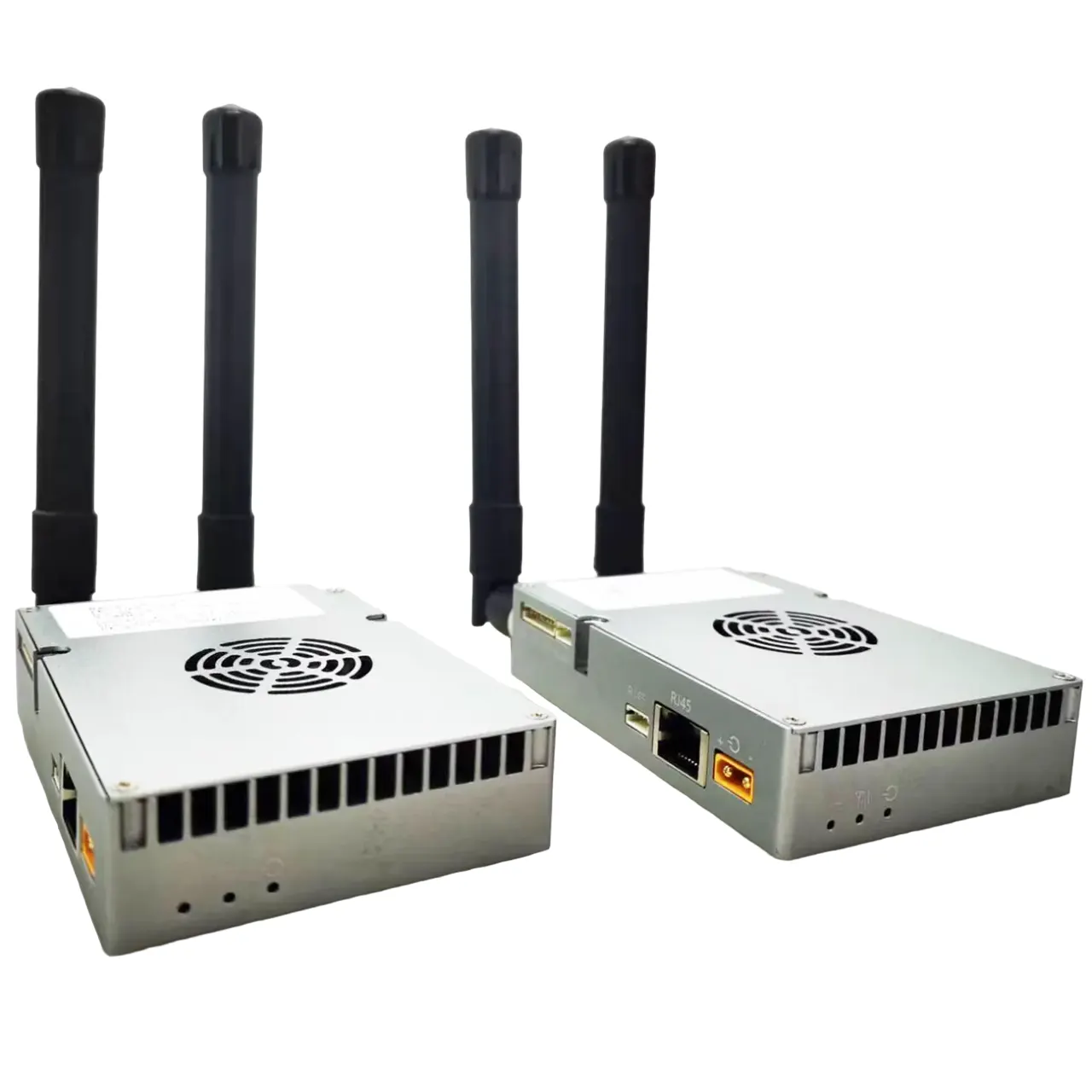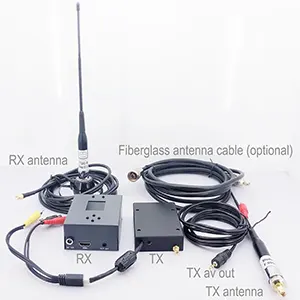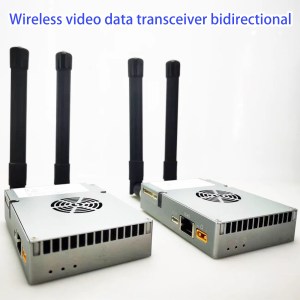15km 30km 80km 150km long-distance wireless video transmitter receiver transmission transceiver PA 2W 5W 10W
Latest test video for the drone Long-range Wirless Video Transmitter and Receiver
2W PA 27KM Real Test from mountain top to seaside Line-of-Sight
Latest 110km test video for the drone Long-range Wirless Video Transmitter and Receiver
NLOS wireless video transmitter and receiver test video in building indoor lift non line of sight
65 KM drone UAV Really fly Test Wireless Video Transmission
65 KM drone UAV Really fly Test Wireless Video Transmission
1.5km for ground NLOS, 10-20-30km LOS air to ground wireless video transmitter receiver transmission
COFDM-912T NLOS (non-line of sight) 1.5km real test in city, buildings, trees and roads
Web Device Management UI for UAV wireless video data link transmitter transmission by IP Net camera
Cheapest CVBS RCA 720P Wireless Video Transmitter + 1080P Receiver Support 128 encryption
COFDM-912T Really test in the complex city environment, transmitter in the car, receiver in the building
Cheap Wireless video transmitter and receiver's small screen has great help on signal strength lock
OFDM Wireless Video Transmitter for IP Cameras Lightweight Long Range Transmission Automatic Network
Transmission Distance
Flight Control Protocol
Transmitter Video Input
Wireless Transmit Method
Obstacle and Sight
Encrypt and decrypt
Transmission Carrier
Data Direction
Antenna
FAQs about Wireless Video Transmitter and Receiver
Our wireless video transmitters have these types of video input interfaces: HDMI 1080P and 4K HDMI, CVBS composite, SDI, AHD, IP Ethernet, BNC, or tell us what type do you need, our engineer will modify to meet your demand.
Our transmission distance can be adjusted by adding power amplifiers. At present, the main ones are 15km, 30km, 50km, 80km, 100km , and 150km, which depend on the needs of customers.
Of course, the transmission distances listed above are all within LOS the line-of-sight range. If there are obstacles between the transmitter and the receiver, NLOS (the non-line-of-sight), the transmission distance is greatly reduced, only 1km or 2km, depending on the number of intermediate obstacles and the local wireless environment.
One-way means, We can only transmit and download video or data from the wireless video transmitter to the receiver in one direction, and we cannot upload video or data from the receiver to the transmitter. This type is also called simplex.
Two-way means that, not only we can download video or data from our wireless transmitter to the receiver, but also we can upload the video or data from the receiver to the transmitter. This is very suitable for operating drones. You can not only see the real-time video transmitted from the drone, but also upload the command to control the drone or the command to control the PTZ camera to adjust the angle to the transmitter. This can operate simultaneously. This type also named half-dulpex or full-duplex.
Please check the details at the below link. https://ivcan.com/request-a-quote-of-wireless-video-transmission/#simplex
Most Wireless video transmitters now support AES128 or AES256 bit encryption and decryption, depending on which model you choose. Please contact us to verify.
The frequencies of both the wireless video transmitter and the wireless video receiver can be modified. Users need to purchase additional parameter configuration boards.
However, considering that the corresponding power amplifier and antenna are already fixed within a certain range when the goods are sent out. If the user adjusts the frequency of the transmitter, the corresponding power amplifier, transmitter antenna and receiver antenna should also be modified to the same frequency, and these users need to be prepared. If not, it will cause the frequency of the wireless video transmitter to be different from the frequency of the antenna, making reception difficult. So please be sure to inform the correct frequency you need before placing an order.
If it is for security or confidentiality, you can use the encryption and decryption functions of the transmitter and receiver, which can ensure that your video transmission is private. .
Yes, all our product parameters can be customized according to customer's needs. If you have a special request, please let us know via the link below.
https://ivcan.com/request-a-quote-of-wireless-video-transmission/
- Change the place of the receiver to avoid potential local interference from strong magnetic environments.
- Ensure that the antennas on both the transmitter and receiver are vertical.
- Please raise the antennas of the transmitter and receiver to maintain a certain height difference.
- Please look around to ensure that there are no obstacles between the transmitter and receiver.
- Change the orientation of the receiver antenna.
- If it doesn't work, try moving the receiver to be near the transmitter's position to see if it exceeds the effective wireless transmission distance.
- Or consider adding a relay of the transmitting between the transmitter and receiver.
- The antenna should be as high off the ground as possible, as the ground will absorb the transmitted signal.
Of course, we also understand that wireless video transmission transmitters and receivers are very expensive. You are far away from the China factory. and hope that the goods you receive are fit for the best performance.
If you pay special attention to a specific parameter or function, we can take some test videos based on the features you want to see, please feel free to contact us. It won't be shipped to you directly without your approval.
To test the delay of the wireless video transmitter and receiver, we need to do two tests.
The first is to test the delay from the camera to the display.
The second is the camera, plus the display plus the wireless image transmission transmitter and the delay of the receiver.
Subtracting the two test results is the real delay of the wireless video transmitter and receiver.
As a professional long-range HDMI wireless video transmitter and receiver supplier and manufacturer in China Shenzhen, we produce the best wireless video transmitter and receiver for many years, and we got a good reputation and best reviews.
Some famous brands of wireless video transmitters, like Blackmagic, Holyland mars 300 400s, Accsoon cine eye 5g, RavenEye, Zhiyun, Inkee benbox, actiontec, CVW SWIFT 800, dahua, iogear, Artek pat-225k, microlite, nyrius, teradek.
The best budget wireless broadcast video transmitter and the receiver have many applications, for 4K tv, CCTV security camera, vehicle backup camera, PTZ video camera kit, battery-powered, computer, sony camcorder, wifi video conference system, CANON DSLR, UAV drone, pc computer laptop, projector, in-car, iPhone iPad, live streaming, GoPro sports camera, raspberry pi, Xbox.
The full HD video, audio, data link smallest 1080P wireless video transmitter and the receiver has many input and output connectors, like AV composite CVBS, HDMI, SDI, BNC, VGA, USB.
The wireless video transmitter sender TX RX frequency has 170-806Mhz, 1.2ghz, 2.4G, 5.8G, lowest but not zero latency. In order to support longer distances, the power amplifier has 10w, 20watts, and even 30W.
What is a best buy FHD wireless video transmitter at a cheap price? It should consider your details requirement, choose suitably, not expensive, if you have any doubt, please fulfil the request a quote form, our engineer will offer you a solution.
Latest 2W Power Amplifier 27 KM long-range wireless video transmitter receiver living demo image data link transmission in 2022
In order to better show our customers the actual support distance and use the effect of the 2W PA 30km long-distance image transmission transmitter and receiver, we conducted an actual test recently and found a Meisha Peak, from here to the seaside of Nan’ao, The distance is 27 kilometers. This [...]
Read MoreFeb
New long-range wireless video transmitter and receiver for drone camera 110km 10W PA wireless video data audio link real test
110km test video of the long-range wireless video transmitter and receiver for the drone video camera Why do we want to do this 110km long-range test this time? Some clients ask me the longest distance of the wireless video transmitter and receiver, now we recommended this 10W Power Amplifier model, [...]
Read MoreOct
Latest Wireless Video Data Audio Transmitter and Receiver Test Video in 2022
Wireless Video Data Audio Transmitter and Receiver TX900 2 Watts 27km test video from mountain top to the seaside. (Video inside) Wireless Video Data Audio Transmitter and Receiver, Two-way, Download-Upload A customer saw our real test video about the 2 watts Power Amplifier 27km long-range wireless video transmitter and receiver. He [...]
Read MoreSep
60-80 km wireless video transmitter receiver transmission really flying test
Really a drone flying test of 60-80 km wireless video transmitter receiver transmission This is a video transmitter and receiver for drone UAV cameras, the best in 2023, and it has many satisfied reviews. It also supports ground to ground, if you have any project that needs a video transmitter [...]
Read MoreOct




























































